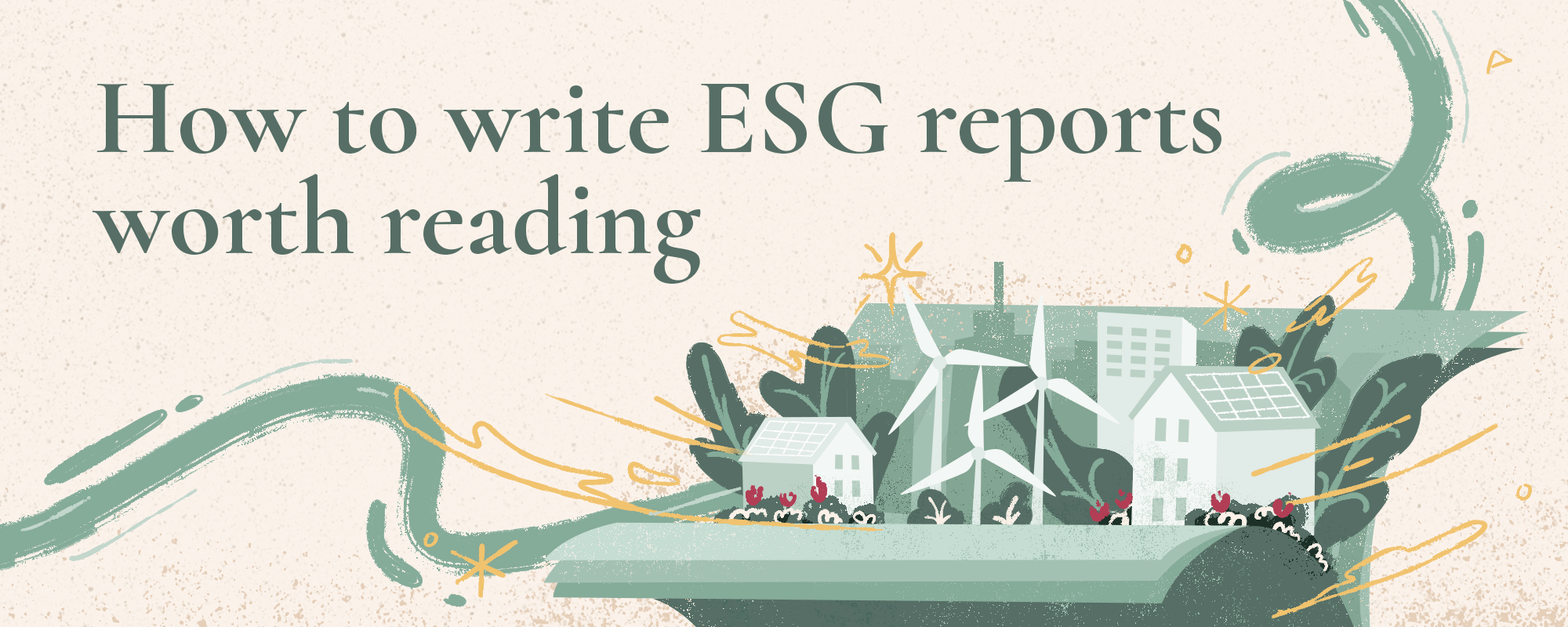“Anyone can do that. Why are you charging so much for it?”
A rush of heat immediately crept up my neck, followed by a bead of sweat.
I felt almost sheepish for even daring to think about receiving payment for the work I had done.
As you can imagine, these were not the most encouraging words to hear as a fresh-faced writer.
Or at least, that was what I was known as to people who had no clue what content marketing was (which, in the early 2010s, was basically everyone).
Back then, I had scored S$5 for my first freelance writing gig.
I didn’t even care how much I earned, really—I was excited to get paid anything at all to do something that I loved.

Fast forward to 2018, and the trope of the starving writer is still very much alive.
It is, in fact, taken quite literally by businesses looking to hire freelance writers or content marketing agencies (like us) in Singapore.
Many companies balk at the market rate. Does content writing really cost that much, they ask? Why not leave it to an intern who seems to have a respectable command of the English language?
Then they wonder why no one reads their blog posts, or ignores their downloadable ebooks and infographics.
The real cost of good content
In 1996, Bill Gates famously proclaimed in an essay that “content is king.”
Looking at the rates that companies offer to writers and content marketers today, however, it might seem like the Microsoft founder was way off the mark with this prediction.
In fact, there are many companies that have built and grown their businesses off the back of irresistible content marketing and copywriting.
Based on our many interactions with potential customers, we’ve concluded that the reluctance to pay reasonably stems from a belief that good writing comes easily.
After all, anyone who can string sentences and look up Thesaurus.com should be able to put a decent 2,000-word blog post together, right?

Business owners and marketing leads, the reason why good writing costs good money is the same as why software engineers are some of the highest paid professionals in the world.
I’m reminded of the story where a woman asks the famous artist Picasso for a napkin on which he has been doodling. Picasso informs her that it will cost 40,000 francs (roughly S$55,000).
“But it only took you 10 minutes,” she protests.
“Madame,” he responds, “it took me 40 years.”
(Credits to my friend, Annie Teh, for suggesting this excellent story, which illustrates my point beautifully)
Behind every compelling story is a whole lot of blood, sweat, and tears (sometimes literally) that writers and content marketers need to pour into their craft.
In this blog post, I pull back the curtains to reveal just how much work goes into making every article and blog post great.

To do that, I’ve interviewed some of the top writers, content marketers, and journalists from across Asia, to find out what their editorial processes look like:
- Terence Lee, chief editor at Tech in Asia
- Si Quan Ong, customer success manager at Ahrefs
- Iris Leung, blog editor at Piktochart
- Visakan Veerasamy, former content strategist at ReferralCandy
- Nadine Freischlad, independent journalist (wrote for VICE, South China Morning Post, and KrASIA)
For the purposes of this article, we’ll focus on longform writing as opposed to copywriting.
If you’re not sure what the difference is between both, don’t worry—we’ll explore this in a future blog post.
Excited? So am I.
Let’s dive into it.
What does “good” content writing look like?
First, we need to establish what good content writing looks like.
Like design, “good” writing is subjective, but only to a certain extent.
Writers should be sufficiently proficient in the technical aspects of writing—think sentence structure, grammar, length, and so on.
At the same time, writers tend to favor different writing styles.
Ernest Hemingway, for instance, had a journalistic tendency that leaned more towards concise, objective prose.
Tech in Asia’s Terence Lee identifies with this particular style:
If we’re talking about features, it’s weaving great anecdotes and quotes into the main points of your story but without being overly flowery. It’s being concise while serving the needs and expectations of your readers.
On the other hand, James Joyce preferred to follow a “stream-of-consciousness” style—his seminal work, Ulysses, apparently contained “more vocabulary words than the entire Shakespeare canon.”
According to our interviewees, good longform articles tend to be:
Well-researched
Thanks to the Internet, everyone and anyone can be a publisher. So what makes your blog post more credible than the millions of similar ones out there?
According to Ahref’s Ong Si Quan: research.
He points to examples from Mark Manson and Tim Urban (of WaitButWhy fame), who are known for producing huge pieces that incorporate copious amounts of facts and figures to back their claims.
What truly sets a piece apart from the rest, however, are anecdotes.
“Good longform writing should dive in-depth into anecdotes of people, places, and things that people really care about to drive a truly compelling and human story,” explains Piktochart’s Iris Leung.
Well-structured
When people choose to read your article, they are doing so because they have bought into the concept you have proposed, and want to find out more about it.
“Good longform writing makes a promise and delivers on it,” explains Visakan Veerasamy, who previous led content strategy at ReferralCandy. He continues:
The sheer volume of text is saying, “listen, I have a lot to tell you,” but it gets you hooked from the start and keeps you interested all the way through.
For instance, if you clicked on our previous blog post, The One Reason Why Content Marketing Isn’t Working for You (+ Case Study), chances are that you want to know why content marketing isn’t, or might not be, working for you (and the case study sweetens the deal).
Imagine if you had to read till the end to find out the answer. You’d probably end up Googling for another article about midway through.
(Also known as pogo-sticking, which isn’t great for SEO. But I digress)
As it turns out, I made sure to place the answer in the second section of the article, before diving into further detail:

Longform articles have the advantage of being able to “get into the nitty gritty because it has the freedom of word count to do so,” adds Iris. “But there needs to be a good storytelling structure in place at the same time, and can’t meander too much, as you need to maintain the attention of the reader for thousands of words.”
The editorial process: from ideation to publishing
With that in mind, it’s clear that there’s a lot more to good writing than just throwing words onto paper (or in this case, onto a screen).
But most people look at the beginning (coming up with topic ideas) and the end (the blog post) and assume that’s all that happens in the middle.
Nothing could be further from the truth.
In fact, there are instances in “the middle” where an article could take months to go live on a website.
Such was the case for Si Quan, when he was writing a guest post for Sumo—the back-and-forth with their blog editor took more than three months.

And that’s not inclusive of all the other parts of his usual editorial process:
Si Quan’s editorial process
- Step 1: SEO keyword research (one to two hours). Looking at the keyword I’m trying to rank for, figuring out the search intent and what other pages are doing to rank there, running a Content Gap analysis
- Step 2: Topic ideation (one to three hours): Figuring out what to write that would stand out in the SERPs, and figuring out how to make it authoritative
- Step 3: Content research and/or interviews (anywhere between one day and several months): This depends on the article. If interviews are necessary, then we have to include prospecting, outreach, conducting the actual interview, transcribing the interview, etc
- Step 4: Outlining (one to two hours): Preparing the outline for the article
- Step 5: Content creation (three to 10 hours): Writing the actual piece after all the research and interviews
- Step 6: Editing (three to 10 hours): Editing the content so it is good, could also be edited by other people
- Step 7: Publishing (~one hour): Uploading to CMS and publishing it
- Step 8: Promotion (two weeks): Promoting the content across various platforms
With this process, Si Quan can deliver between four to five blog posts per month on average. By and large, he’s able to apply the same standards to all of his articles about 80 percent of the time.
“I have been extremely fortunate to work for companies and people who understand the art of content marketing and writing—and the time required to write a really, really good high-quality piece,” he explains. “This has allowed me to put in the time, energy and effort to create something that I can be proud of.”
And it has paid off handsomely for Si Quan, with several of his articles ranking well on Google and driving tons of traffic back to those websites.
Si Quan’s writing experience: ~4 years
Iris’ editorial process
As the sole editor of the Piktochart blog, Iris’ editorial process is very similar to Si Quan’s, albeit shorter as she also works with a content marketing agency to produce blog articles (full disclosure: that’s us).
“A 1,000 to 1,200 article will take about three to five hours in all to research and put together, depending on research and number of sources interviewed,” she says.
Then it’s on to two rounds of proofreading and revisions, followed by setting the blog post up on WordPress and publishing it—a process that takes between one to three hours.

Why go through two rounds of edits, with two different people? One person, Iris explains, reviews for grammar and spelling, while the other reviews for overall content, asking questions such as:
- Does it have enough examples?
- Is it coherent?
- What could it use more of?
Iris’ writing experience: ~8 years
Visakan’s editorial process
Practice does indeed make perfect. Having worked in ReferralCandy’s content team for the past five years, Visakan has his editorial process down to a science.
“If I really wanted to, right now I could probably focus for two to three hours and write a blog post doing a solid marketing breakdown and analysis of some business,” he says.
Yet, Visakan acknowledges that it “wouldn’t have been a good use of my time to write content like that.” As he moved into his previous role as a blog editor, he opted to “write rough outlines and directives and hand them off to freelance writers” for such articles.

Instead, Visakan worked on meatier pieces that focused on “bottom-of-funnel” content, which was more closely tied to their product.
Critical to his editorial process is time taken to “storyboard” or “wireframe” the content before getting down to the writing proper. Similar to Iris, he asks himself questions such as:
- Who’s going to read this?
- What problem does it help them solve?
- Why would somebody share this with somebody else?
“Every piece of content needs to get reader X from point A to point B,” Visakan explains. “If I define those three things clearly, and it seems that it would actually be useful to people, then I can get started.”
The actual writing would then take “several hours a day for several days, depending on how complicated the piece is, and how unfamiliar the territory is.”
Visakan’s writing experience: ~7 years
Nadine’s editorial process
Journalists tend to be on a different timeline as compared to content marketers, as evident in the case of independent journalist Nadine Freischlad.
“It’s hard to standardize [my editorial process], as some articles are done within an hour or less, while others take months,” she explains.
For the latter, Nadine gives an example of an article she wrote for KrASIA, which required “a lot of research” and working with “the right sources.”
“I had the idea right after the merger was announced, started the research and interview process, and decided to wait for the right time to finish and publish it,” she recounts.

The writing itself took “maybe a day.”
On average, Nadine crafts and delivers between 10 to 20 pieces per month—”a mix of short- and medium-length articles.”
“For short news pieces there are different standards than for a longform piece, but once you’ve defined those standards, sticking to them is straightforward.”
Nadine’s writing experience: ~10 years
Terence’s editorial process
Terence, on the other hand, has a well-defined editorial process for writing longform features—one that he has honed over almost a decade of writing such pieces:
- Step 1: Ideation. Happens all the time really. I’m constantly thinking up new ideas
- Step 2: Conceptualization (30 minutes). This is where I move from a one-liner idea into something a bit more fleshed out. What are the questions I want to answer with this piece? What are the aims?
- Step 3: Interview (one to three hours). Depending on how many interviewees, and the nature of the interview (whether it be face-to-face, phone call, or email)
- Step 4: Outline (15 to 30 minutes). I plan the flow of the piece, and come up with preliminary headlines
- Step 5: Writing (three hours). I write according to the flow I planned. Sometimes the flow changes
- Step 6: Editing (30 minutes to one hour). This is where I cut parts that are boring and make the piece more concise
Particularly for longform writing, Terence spends more time structuring the piece and “weaving storytelling into the point you’re trying to communicate.”

Over the years, Terence has undergone this editorial process so many times that he has the utmost confidence in his ability to deliver the same high standards for every article he pens. “It is a process that’s ingrained in me, and has been working,” he affirms.
Terence’s writing experience: ~10 years
Few make the mark
You might have noticed that each of the professional writers and content marketers interviewed in this blog post have at least four years of editorial experience under their belt, if not more.
It is through these years that they were able to become excellent at their craft—writing, editing, reading, and attending courses—and consistently produce blog posts and articles of impeccable standard.
Unfortunately, few articles out there are able to meet these standards, let alone exceed them.
Visakan pegs the number of articles—produced within the tech industry—that actually hit the mark at around 10 percent.
“If we got really rigorous about it, it might go down to maybe one percent—maybe even less than that,” he adds.
The reason? Inexperience, coupled with the pressures of content marketing and publishing:
The primary reason for this is the sheer volume of content being published all the time, often on short schedules, by relatively inexperienced writers, who are being pressed to produce lots of snackable content that’s optimized for search traffic.
For our interviewees, such problems are water under the bridge.
So if you’re truly looking to produce high quality content and attract the right audience, remember that you’re paying for far more than just a page full of words.
What you’re paying for is years and years of honed editorial experience and expertise.
—
200+ industry-leading tech companies in Southeast Asia are happy clients of With Content. Join them and start delivering valuable content to your potential customers today.



